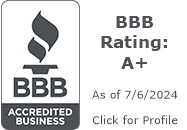As homeowners age, many explore ways to leverage the equity they’ve built up in their homes to secure financial comfort in retirement. Two popular options are reverse mortgages and home equity loans. Both can unlock the value of your home equity, but they cater to different needs and come with distinct features. Understanding the nuances between them is crucial for anyone looking to make an informed decision about their financial future.
What is a Reverse Mortgage?
A reverse mortgage is a loan available to homeowners who are 62 years or older, allowing them to convert part of the equity in their home into cash. The unique aspect of a reverse mortgage is that the borrower does not have to pay back the loan until the home is sold or vacated. As long as the borrower lives in the home, they are not required to make monthly payments towards the loan balance, but they must stay current on property taxes, homeowners insurance, and maintenance.
What is a Home Equity Loan?
A home equity loan, often called a second mortgage, allows homeowners to borrow money by leveraging the equity in their home. Unlike a reverse mortgage, borrowers of home equity loans must make monthly payments to repay the loan, which includes both principal and interest. These loans have fixed terms, and the amount borrowed is received as a lump sum.
Key Differences
Eligibility and Repayment:
- Reverse Mortgages are specifically designed for homeowners aged 62 and older, providing a source of income without the requirement of monthly repayments as long as the borrower lives in the home.
- Home Equity Loans are available to homeowners regardless of age, as long as they have sufficient equity in their home. Borrowers must make monthly payments, starting immediately after the loan is disbursed.
Loan Amounts and Disbursement:
- Reverse Mortgages allow homeowners to receive funds as a lump sum, regular monthly payments, a line of credit, or a combination of these options. The amount available depends on the borrower’s age, the home’s value, and interest rates.
- Home Equity Loans provide borrowers with a one-time lump sum. The loan amount is based on the home’s equity and the borrower’s creditworthiness and income.
Interest Rates:
- Reverse Mortgages typically have variable interest rates, which can change over time based on market conditions.
- Home Equity Loans usually come with fixed interest rates, offering predictable monthly payments throughout the term of the loan.
Costs and Fees:
- Reverse Mortgages involve several costs, including origination fees, mortgage insurance premiums, and ongoing service fees, which can add up over time and reduce the equity left in the home.
- Home Equity Loans also come with closing costs and fees, but they are generally lower compared to reverse mortgages and are paid upfront.
Impact on Estate Planning:
- Reverse Mortgages do not require repayment until the borrower no longer occupies the home. However, this can mean less inheritance for the borrower’s heirs, as the loan must be repaid from the estate, potentially requiring the sale of the home.
- Home Equity Loans are repaid on a regular schedule, allowing homeowners to preserve more of their home’s equity for their heirs, assuming all payments are made as agreed.
Which Option is Right for You?
Choosing between a reverse mortgage and a home equity loan depends on your financial situation, age, and goals for retirement.
Consider a Reverse Mortgage if:
- You are at least 62 years old and want to supplement your retirement income without a monthly loan payment burden.
- You plan to stay in your home for the foreseeable future.
- You want flexible payment options that adapt to your financial needs.
Consider a Home Equity Loan if:
- You need a lump sum of money for a specific purpose, such as debt consolidation, home renovations, or a major purchase.
- You prefer the discipline of regular monthly payments and want to pay off the loan over a set period.
- You are younger than 62 or are comfortable with the repayment obligations that come with a traditional loan.
Conclusion
Reverse mortgages and home equity loans offer valuable ways to tap into the equity you’ve built in your home, but they serve different financial planning needs. A reverse mortgage can provide a steady income stream for retirees without the burden of monthly payments, while a home equity loan offers a lump sum with a predictable repayment schedule. Carefully consider your financial situation, consult with a financial advisor, and understand the implications of each option to make the best decision for your retirement years.






